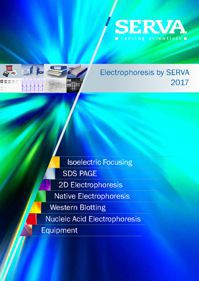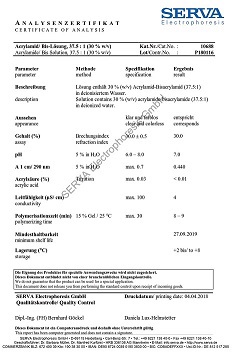Synperonic® F-108
Synperonic F-108 is a polyoxyethylene-polyoxypropylene block copolymer that forms surfactant associates which are of interest in pharmacy.
Synperonic F-108 is an effective soluhilizer for substances demonstrating pharmaceutical activity. The increased solubility in water of compounds like diazepam and indomethacin may be due to the micellar solubilization by Synperonic F-108.
The non-ionic surfactant Synperonic F-108 demonstrates good adsorption characteristics. These particular properties may be of interest in pharmaceutical chemistry e.g. for the coating of liposomes.
Synperonic is a registered trademark of CRODA International Plc
Synonym: Pluronic F-108, Poloxamer 338
CAS registry number: (9003-11-6]
Relative molecular mass (Mr): ca. 14000
Classification: Non-ionic surfactant
Literature specification:
• Hydrophilic-lipophilic balance (HLB): 27
Bibliography
Applications in Cell Culture
Ruardij, T.G. et al. (2002) Adhesion and growth of electrically active cortical neurons on polyethylenimine patterns microprinted onto PEO-PPO-PEO triblockcopolymer-coated hydrophobic surfaces. NanoBiosciences 1, 4-11.
Pharmaceutical Applications
Lin, S.Y a. Yang, J.C. (1987) Drug interactions in pharmaceutical formulations. Part VII. Solubility and thermodynamic parameters of diazepam in Pluronic surfactant solutions. Acta Pharm. Technol. 33, 222-4.
Yang, J.C. a. Lin, S.Y. (1987) Effect of Pluronic surfactants on the solubility and stability of indomethacin in aqueous solutions. Chieh Mien K'o Hsueh Hui Chih 10, 9-19.
Jamshaid, M., Farr, S.J., Kearney, P. a. Kellaway, I.W. (1988) Poloxamer sorption on liposomes: comparison with polystyrene latex and influence on solute efflux. Int. J. Pharm. 48, 125-36.
Duclairoir, C. et al. (2002) -Tocopherol encapsulation and in vitro release from wheat gliadin nanoparticles. J. Microencapsulation 19, 53-60.
Further Applications
Khmelnitskii, Y. et al. (1992) Catalysis by alpha-chymotrypsin entrapped into surface-modified polymeric nanogranules in organic solvent. Eur. J. Biochem. 210, 751-7.
Neu, T.R. (1996) Significance of bacterial surface-active compounds in interaction of bacteria with interfaces. Microbiol. Reviews, March 1996, 151-66.






